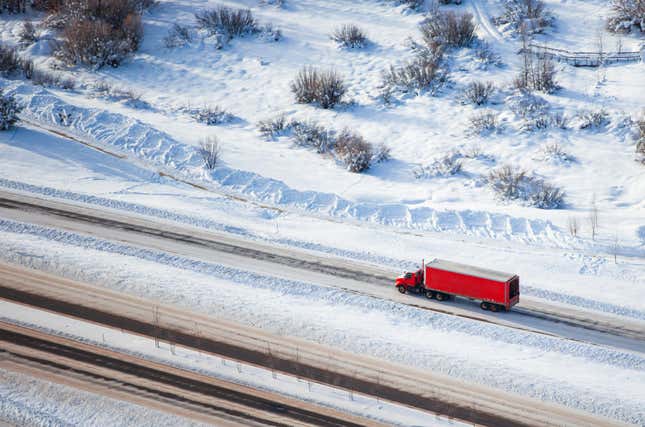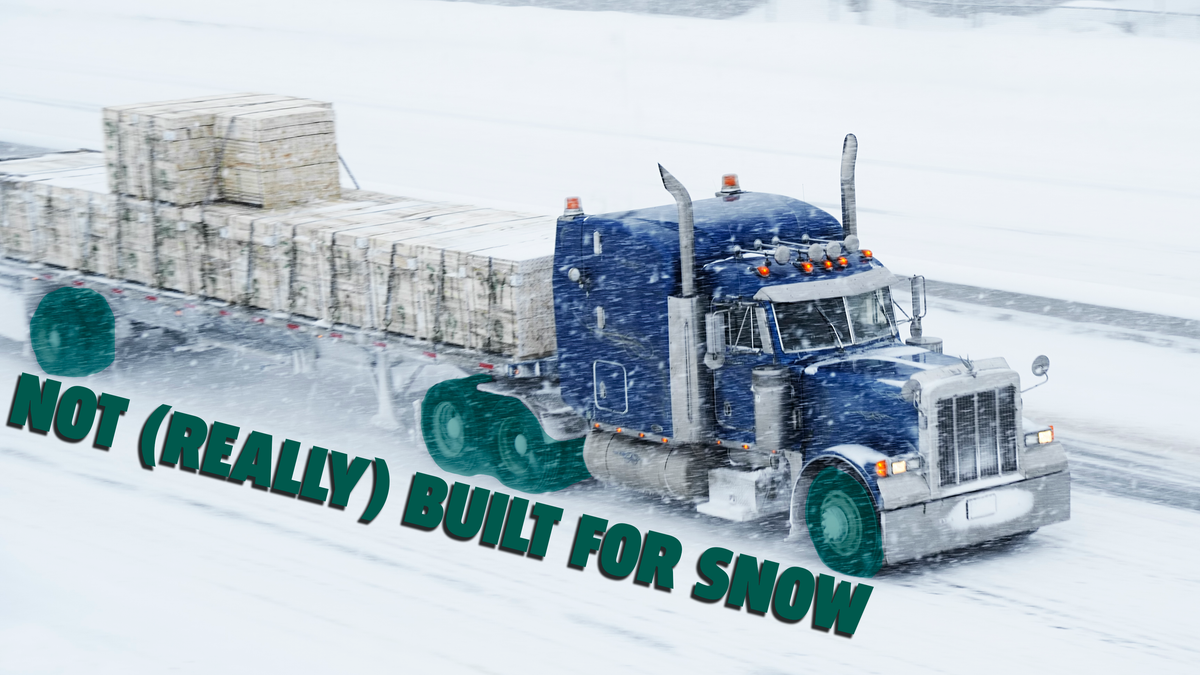If you live in some of the more northern latitudes of the Earth, you’ve likely dealt with some snow recently. If you’re unfamiliar, “snow” is that wet white stuff that falls from the sky and makes everyone around you forget how to drive — the same stuff that the erudite among us buy snow tires to handle. Yet, the best drivers of us all — truckers — seem to do without.
As a lifelong Northeasterner, I’ve often wondered whether the semis that would blow past me on the highway every winter were truly equipped for the conditions. So, I did a bit of research, and it turns out that 18-wheelers don’t really do the whole “snow tire” thing. Instead, they skip straight to something better.

Now, let’s get some specifics clear here. Tractor trailers don’t run snow tires as you or I know them — soft, chunky tires that you swap on to your car for the winter months, but are too soft to run in the summer. Truckers do prefer chunkier tire treads for inclement weather, but most “snow” tires offered for semis in the U.S. are more akin to a passenger car’s all-season: They may have a more aggressive lug tread, compared to the more fuel economy-minded rib tread, but they’re built to be used even when the weather warms up.
With semi trucks, winter vehicle prep is more about ensuring proper tread depth than swapping out the rubber on all 18 wheels. Online CDL training program Trucking Truth, in its section on preparing trucks for winter driving, only says this about tires:
Tires. Make sure you have enough tread on your tires. The drive tires must provide traction to push the rig over wet pavement and through the snow. The steering tires must have traction to steer the vehicle. Enough tread is especially important in winter conditions. You must have at least 4/32-inch tread depth in every major groove on front tires and at least 2/32 inch on other tires. More is better. Use a gauge to determine if you have enough tread for safe driving.
Heavier vehicles generally perform better in low-grip scenarios, which helps out fully-loaded tractor trailers when the snow starts to fall. As conditions deteriorate, plenty of truckers — and trucking forum posters — will simply park their semis until a storm passes or plows are able to clear the roads. When things get really bad, though, truckers turn to a tool that few car drivers really consider: Tire chains.

Rather than removing their summer wheels every winter, which necessitates finding (and paying for) a place to actually store all those spares, truck drivers just bust out the chains whenever they’re needed — or, depending on the area, whenever they’re mandated. States like California and Colorado — and, for some reason, Georgia — require chains in inclement weather, but the Northeast doesn’t seem to have the same rules. Of the six states that make up New England, only Vermont ever mandates the use of tire chains.
Between tire chains and the sheer weight of their vehicles, truck drivers don’t often need a snow tire (at least, not here in the United States). They’re trained well enough to use engine braking, gear selection, and their own judgment to their advantage — knowing when to drive normally, when to exercise extreme caution, and when to just shut things down until it all blows over. Sometimes, when the conditions outside are really that bad, the smartest option is not to go anywhere at all.

